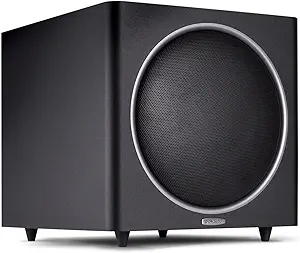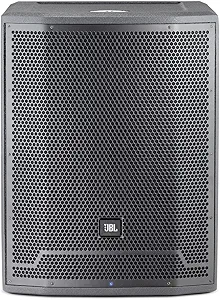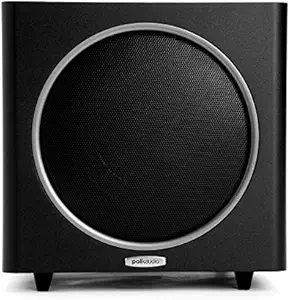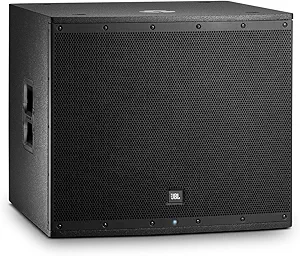Polk Audio Subwoofers
Polk Audio is a leading manufacturer of subwoofers, offering a wide range of products to suit any budget or application. Polk's subwoofers are known for their deep, powerful bass, making them a popular choice for home theater and music lovers alike.
Polk's main competitors in the subwoofer market are Klipsch and SVS. Klipsch offers a range of high-end subwoofers that are known for their tight, accurate bass. SVS is another leading manufacturer of subwoofers, offering a wide range of products that are suitable for a variety of budgets and applications.
When it comes to choosing a subwoofer, it is important to consider the size of the room, the type of music or movies you enjoy, and your budget. Polk's subwoofers are a great choice for those who want deep, powerful bass without breaking the bank.
BIC America Subwoofers
BIC America is a leading manufacturer of subwoofers. Major competing brands include Polk Audio, Definitive Technology, and SVS. BIC's top product lines include the V1220 and V1230.
The V1220 is a 12" subwoofer with a frequency response of 20-200 Hz. It features a peak power of 1000 watts and a RMS power of 500 watts. The V1230 is a 12" subwoofer with a frequency response of 30-200 Hz. It features a peak power of 1500 watts and a RMS power of 750 watts.
Both subwoofers are designed for use in home theater systems. They are highly durable and deliver excellent sound quality. BIC America subwoofers are a great choice for anyone looking for high-quality, low-frequency sound.
Klipsch vs JBL: Compare High-End Subwoofers
JBL and Klipsch are two well-established brands that you can trust and invest in. Manufactures of both brands usually produce high-end models, so don’t expect to save some money if you're considering these two.
Klipsch produces top-quality subs that have a pure, natural sound. They usually have a well-recognizable look with copper driver and black corps with a wood finish that conveys some retro vibe. Subwoofers from JBL are offered in a wide variety of shapes, colors, sizes, and designs. This company provides modernized subs with powerful sound. In short, the Klipsch vs JBL comparison offers you a choice between classic models with pristine sound and modern models with powerful bass.
Main Features
Klipsch subwoofers are supplemented with digital amps (BASH amp, for example) that offer ample power, increased, true-to-source precision, clean output, and powerful bass. All the subs from this brand have a volume control, variable phase control, and low pass crossover.
The Internal Flare technology, implemented in most Klipsch subs, eliminates the port noise. Klipsch models always have a front-firing driver, allowing for great placement flexibility. They also usually come with a flexible, removable cloth grill and have an MDF cabinet.
JBL subs have a wider array of features. For instance, they usually have a bigger quantity of onboard controls, like input sensitivity, volume, polarity, and crossover frequency. The last one allows activating the XLF Extended Low Frequency setting for a more extensive bass, just like the one you can hear only in nightclubs. Some models also can offer selectable impedance.
Some JBL subwoofers have a slipstream port design with a double-flared shape that contributes to cleaner bass. Floor-standing models usually come with 4 feet that elevate the subwoofer above the floor. Klipsch subs come with flat feet. JBL subs normally use metal (zink, steel, etc.) grills instead of cloth ones.
Subwoofers from JBL are also known for having a heavy-duty enclosure, resistant to humidity, dust, and high temperatures (especially portable models). Klipsch can't offer that. Models from the cheaper range have MDF cabinets as well, but more expensive models come in Duraflex or birch plywood enclosures.
Professional-grade models from JBL have the integrated Image Control Waveguide technology that provides consistent bass response and uniform coverage, being able to transmit the equally powerful bass to a large audience.
Let's take a closer look at two floor-standing models from both brands as an example of the JBL vs Klipsch features comparison. The Klipsch R-100SW offers you 3 controls (volume, low pass crossover, and phase control) and an all-digital amplifier. The JBL Professional LSR310S has a slip stream port, XLF setting (along with the other controls such as input sensitivity, volume level control, etc.), and a Class-D amplifier.
Obviously, the JBL Professional LSR310S is a winner here as it has more impressive features.

- The patented slip stream port
- Selectable input sensitivity
- Active speaker amplification type
- XLF extended low frequency setting
- Professional balanced inputs and outputs
- 10-inch down-firing high excursion low frequency driver
- 15 x 15.7 x 17.7 inches and 34 pounds
Output Power
Both brands offer truly powerful subwoofers, so they will work great for different audio content. However, Klipsch subwoofers are generally more powerful. JBL issues subs that are rated at around 100W – 200W. Similar Klipsch models are usually 300W – 400W powerful. This way, if you need a more powerful model, you will have to search less when choosing from the Klipsch range.
Just for an instance, the Klipsch R-100SW has 300W of power while the JBL Professional LSR310S is rated at 200W.
Apparently, the Klipsch R-100SW gives you more power for the price.

- Volume low pass crossover and phase control
- Frequency response: 32Hz - 120Hz /- 3dB
- Amplifier power (cont/peak): 150W/300W
- Line level/LFE RCA inputs
- Durable MDF cabinet
- 10-inch front-firing spun-copper IMG woofer
- 16.9 x 12.5 x 14.8 inches and 26 pounds
Signal-to-Noise Ratio
Normally, JBL subwoofers have a better signal-to-noise ratio. For example, the Klipsch Reference R-10SW has a value of 80 dB while the JBL Professional LSR310S has 90 dB.
As you can see, the JBL Professional LSR310S wins in this category, providing a more transparent sound.

- The patented slip stream port
- Selectable input sensitivity
- Active speaker amplification type
- XLF extended low frequency setting
- Professional balanced inputs and outputs
- 10-inch down-firing high excursion low frequency driver
- 15 x 15.7 x 17.7 inches and 34 pounds
Woofer Composition
Klipsch makes subwoofers of spun copper. It contributes to even bass distribution. Such cones are low-mass but durable. Nevertheless, JBL woofers are more rigid. They are made of poly-cellulose with added high-temperature voice coil designed to provide punchy midrange, as well as pristine sound quality and stability.
If we juxtapose the JBL Arena Sub 100P with the polycellulose woofer and the Klipsch R-100SW with spun-copper IMG woofer, the first one will appear to be more durable. Since the JBL Arena Sub 100P isn't afraid of high temperatures, allowing you to listen to bassy music for long hours, it's fair to consider its woofer as a better one.
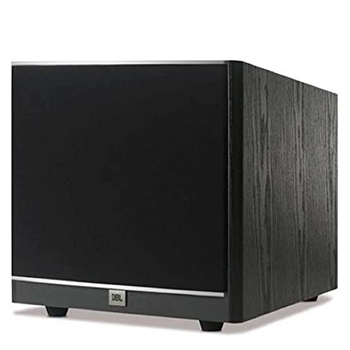
- Computer-optimized driver positioning
- Four removable metal carpet spikes
- Bass reflex (ported) cabinet design
- Dual rear ports
- 10-Inch high-output polycellulose woofer
- 100-watt RMS digital power amplifier
- 16 x 16 x 14.3 inches and 24 pounds
Connectivity
Almost all Klipsch subwoofers have component connectors (line level/LFE RCA inputs). To add a wireless connection, you will have to buy the Klipsch WA-2 wireless subwoofer kit that consists of a transmitter and a receiver. JBL subs are less complicated in terms of wireless connectivity. Most of them are Bluetooth-enabled. They also usually have XLR and TRS connectors.
For example, the JBL Professional EON618S supports Bluetooth and has 2 balanced XLR inputs and XLR male output while the Klipsch R-100SW has only 2 line inputs.
It's obvious that the JBL Professional EON618S is a much better choice as it provides more modern connectivity options.
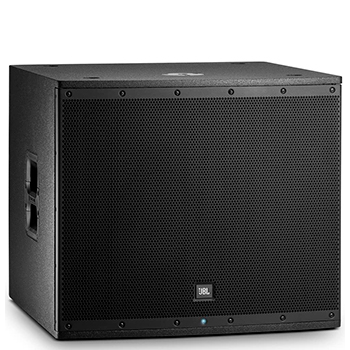
- Bluetooth control for iOS and Android
- Input: balanced combo ¼”/ XLR (x2)
- Output: male XLR (x2)
- Maximum SPL output: 134 dB
- 3 parametric EQs Hi & Lo shelf gain
- 1000W highly efficient class-D amplification
- 18-inch system type self powered subwoofer
Price
JBL subwoofers are generally pricier than Klipsch subwoofers. Even their compact models are more expensive than some floor-standing models from Klipsch.
This way, the Klipsch Reference R-10SW is a much more beneficial model in terms of price than the JBL Professional LSR310S considering the fact that they have similar specs.

- The patented slip stream port
- Selectable input sensitivity
- Active speaker amplification type
- XLF extended low frequency setting
- Professional balanced inputs and outputs
- 10-inch down-firing high excursion low frequency driver
- 15 x 15.7 x 17.7 inches and 34 pounds
Conclusion
Both brands have a very serious approach to subwoofer manufacturing. Klipsch subs give you a more natural sound and are offered for a cheaper price. However, JBL subs meet all the needs of modern users. They give you more settings for sound customization, support Bluetooth, have many high-tech features, etc.
- Bose vs Kenwood
- Yamaha vs BIC America
- Pioneer vs MTX
- Definitive Technology vs BIC America
- Pioneer vs BIC America
- Sony vs BIC America














